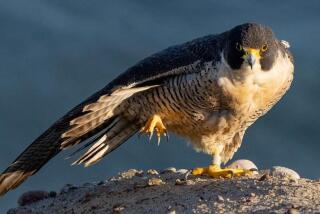Environment : Notes about your surroundings
Clapper Rails--There was bad news for friends of the light-footed clapper rail this spring, as the northernmost of nine breeding populations of the endangered marsh bird was lost. For the state, 163 breeding pairs were counted as Upper Newport Bay remained the stronghold for the bird, with 116 pairs--a whopping 71% of the total.
Anaheim Bay, in the Seal Beach Naval Weapons Station, dropped from 14 breeding pairs in 1988 to just six pairs in 1989. There is some good news, however, as breeding success for the remaining pairs was much better than in 1988 (apparently the result of less predation by red foxes and other animals), which should result in a greater population of the bird there next breeding season.
Dick Zembal, a Fish and Wildlife Service biologist who is tracking the clapper rail, said the eight remaining populations represent an all-time low. With each population lost, the bird is in greater risk of extinction; outside of Upper Newport Bay, most of the populations are so small that they are extremely vulnerable to disease or other disruptions in their environment.
It is not clear, Zembal said, why the population of clapper rails at Carpinteria Marsh in Santa Barbara County was lost. If the problem can be identified and corrected, clapper rails from Upper Newport Bay may be transplanted to the marsh.
Another plan under consideration is a captive propagation program, in which eggs would be removed from nests at Upper Newport Bay and the chicks raised for introduction at other marshes where the number of birds--and thus their genetic diversity--is running dangerously low. Candidate marshes for the program include Anaheim Bay and Point Mugu.
Biologists are proceeding carefully with the ideas because of a “hesitation to use this endangered species as a guinea pig,” Zembal said. Decisions are expected before next spring.
Meanwhile, Zembal expressed optimism over a proposal for Anaheim Bay that could provide natural control of red foxes and other medium-size clapper rail predators (such as skunks and raccoons). One of several alternatives under study in an environmental impact study being prepared for the marsh, the plan calls for the restoration of native shrub lands surrounding Anaheim Bay (still within the Naval Weapons Station).
The plan would provide habitat for the coyote, which roamed the area before being squeezed out by development. Recent studies have shown that coyotes, which do not display a taste for clapper rails or their eggs, serve as a natural check on red fox populations which often explode in the coyote’s absence.
Efforts to control red fox populations at Anaheim Bay by trapping and other artificial means has embroiled the Navy in controversy and a lengthy legal battle.
More to Read
Sign up for Essential California
The most important California stories and recommendations in your inbox every morning.
You may occasionally receive promotional content from the Los Angeles Times.










